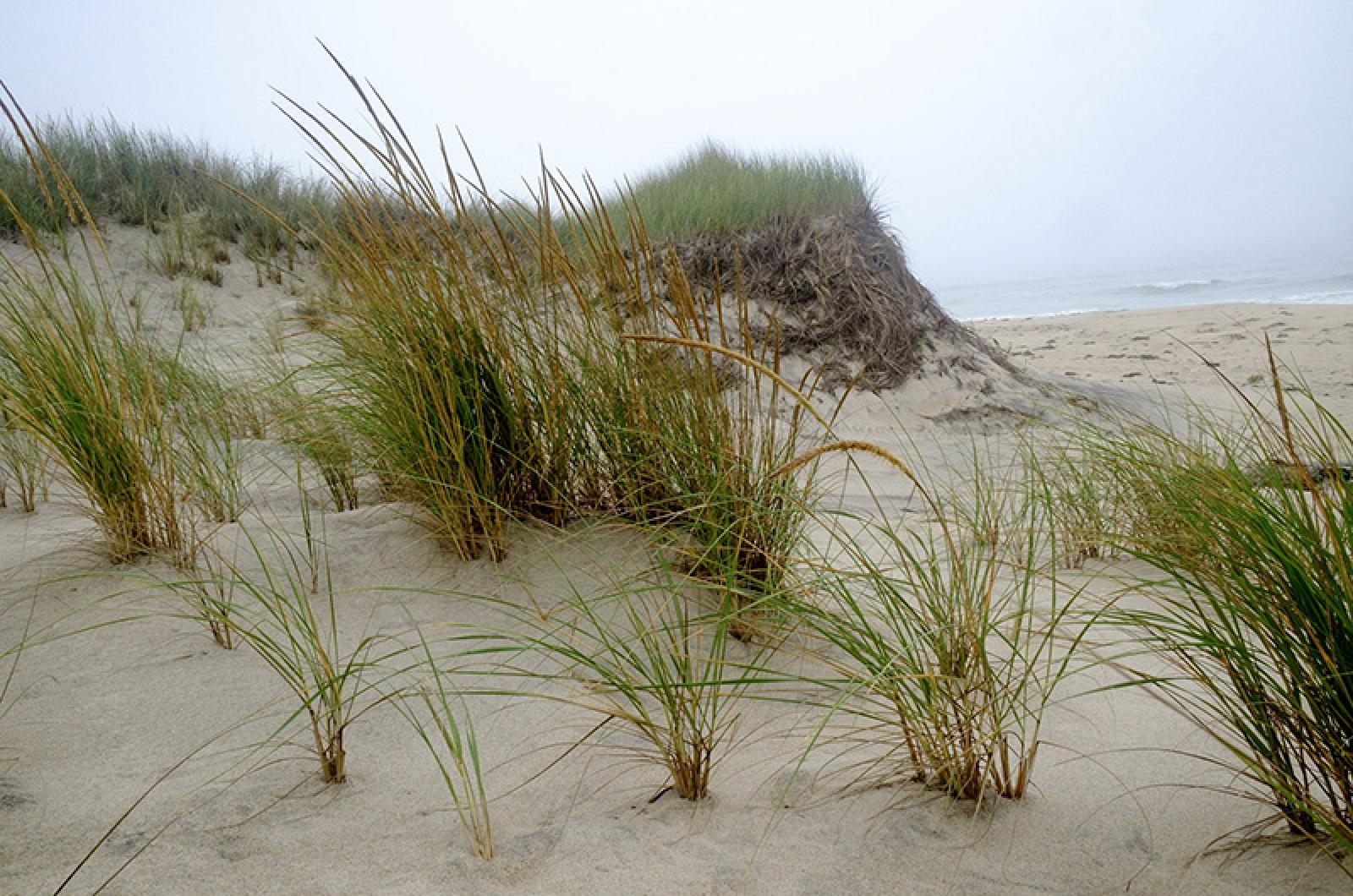We turned off Moshup Trail into the small parking lot. It was an early April afternoon; our family had been pandemically separate for weeks.
Time for a walk on the beach, all together. When we got there, others were walking too. We headed east until we reached the dunes. We couldn’t see a soul and there were no longer other footsteps in the sand. The sun was low in the sky, the light was iridescent, and the winds were calm. Crashing waves pierced remote silence. We left the beach, climbed the bank, and descended into a sandy wild moonscape that made us feel small.
The spectacular dunes we had entered are part of the 304 acres of Red Gate Farm purchased by the Sheriff’s Meadow Foundation and the Martha’s Vineyard Land Bank. Maybe you’ve been in those dunes; if you have, you’ll never forget it. This purchase is the most stunning local event of these troubled times (which are disturbing in diverse ways but full of silver linings).
Humans rarely alter places for the better, or so it seems.
With this tremendous gift to the community, however, the Island has changed for the better, irrevocably and forever. We owe deep gratitude to all who made this happen. Twenty seven million dollars for a huge chunk of this extraordinary property. It now belongs to all of us. It’s worthwhile in every way.
But there’s a flip side.
The Island has changed in other ways this year. It’s not just that we walk around in masks and keep our distance. The essential rhythms and patterns of our lives have changed, and part of that change is a wave of people who have decided this is where they want to be. All the time, or at least more time than before. No two-week rental in August any longer; it’s time to buy a place and settle in. Those who relocate here do and will contribute to the community in many ways. But they also cause greater demand for limited real estate inventory, and prices that are soaring — as prices do when desirability increases.
For decades it has been difficult for working people to enter the Vineyard housing market and make a home. It’s harder than ever. For many, a remote possibility has now become an impossibility.
We need another $27 million. Or two. We need hundreds of new housing opportunities for those for whom stable affordable housing is out of reach. We have made incremental progress with this thorny and complex problem, but we need to leap forward in a way that dwarfs past gains. We’re losing this race. If you try to get to Mexico by driving toward Canada you’ll never get to Mexico. We’re headed in the wrong direction.
Land conservation and affordable housing should not be competing interests. To be part of a truly great community, we must assure that they walk hand in hand, step by step. The successes of one are weaker without the successes of the other.
Anyone have an idea? Well, yes, people have, for 20 years. Several times there have been serious efforts to create a housing bank — a parallel structure to the land bank. The land bank creates public access to property that would be otherwise inaccessible. A housing bank would create public access to a fundamental need that has become inaccessible.
Two efforts to create a housing bank have failed. We’ve never quite put the pieces together. Those failures do not negate the need or the value. Never has it been greater. Is it time to try again? Could the third time be the charm?
Maybe, but that’s only a part of the solution.
This “singular purchase” (as land bank executive director James Lengyel calls it) was possible due to a powerful combination of public funding (from the land bank) and private donations (through Sheriff’s Meadow). Author and historian David McCullough once said about affordable housing, “It ought to become socially unacceptable among people of affluence on this Island not to take part in helping to solve these problems. We ought to be saying to everyone, to ourselves, if you want to be here, you want to be a citizen here, you want to own a home here, you want to take part in the community here, open up your wallet and play your part proportionately. “
Once again, as I have so many times before, I’m repeating that to myself. And to you.
Ecology is about the relationship of organisms to one another and to their physical surroundings. What about the ecology of people? Access to this splendid property will make us happy, but we need to vigorously pursue another kind of happiness too. One without the other doesn’t make it. Why can’t our community be as majestic as those unforgettable dunes? Why doesn’t our community feel complete, inclusive, and equitable?
Because for many there is no place to live. That’s a harsh sentence.
John Abrams is the president and CEO of South Mountain Company in West Tisbury.




Comments (16)
Comments
Comment policy »